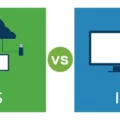SHA-2 is a cryptographic hash function used in many digital security protocols. It is based on the cryptographic concept “Merkle–Damgård construction” and is considered highly secure. SHA-2 is made up of several different bit lengths, each of which offers different levels of security.
SHA-1 was the first version of the SHA algorithm and was used for many years before it was deemed outdated and replaced with SHA-2 due to its vulnerability to attacks. SHA-1 produces a 160-bit hash, while SHA-2 produces hashes in various lengths, depending on what bit length is chosen – 224, 256, 384, or 512 bits.
The primary difference between SHA-1 and SHA-2 lies in the length of the hash that each algorithm produces. While SHA-1 produces a shorter code with fewer possibilities for unique combinations, SHA-2 generates longer hashes with more complex patterns to protect against malicious attacks. Additionally, while SHA-1 uses 80 rounds of cryptography operations, SHA-2 has anywhere from 64 to 80 rounds depending on the specific bit length chosen.
SHA-2 is commonly used by websites to validate digital certificates or documents as well as for authentication purposes such as password protection on websites and other digital platforms. It can also be used for data integrity checks to make sure that data has not been altered during transmission across a network or internet connection.
Overall, SHA-2 is a highly secure hash function that provides advanced levels of protection against malicious attacks compared to its predecessorSHA-1. With its variable bit lengths and increased complexity it makes it difficult for attackers to uncover patterns and break through security protocols utilizing this algorithm.

Are SHA-2 and SHA256 the Same?
Yes, SHA-2 and SHA-256 are the same things. SHA-2 is a family of cryptographic hashing algorithms that includes several different bit lengths, the most commonly used being SHA-256. This bit length produces a 256-bit hash, which is 64 characters long. It is used in many applications such as digital signatures and message authentication codes (MACs), and it is also used to secure sensitive data such as passwords and credit card numbers. All of the different bit lengths of SHA-2 produce the same level of security, but the shorter ones are more efficient in terms of computation time.
The Use of SHA-2
SHA-2 (Secure Hash Algorithm 2) is a cryptographic hash algorithm that is used to generate digital signatures and security certificates for authentication. It is an evolution of the SHA-1 algorithm, which was released in 1995. The SHA-2 family consists of several hash functions: SHA-224, SHA-256, SHA-384, and SHA-512. It is widely used in many applications such as SSL/TLS, code signing, password hashing, and digital signatures.
The primary purpose of SHA-2 is to provide a secure way to verify the integrity of data being transmitted over a network or stored in a file. It creates a unique ‘fingerprint’ for each piece of data by computing a cryptographic hash on it using one of its algorithms such as SHA-224, SHA-256, etc. Since these hashes are unique, any change to the original data will result in a different hash value being returned when the same algorithm is applied again on it. This allows us to detect any malicious tampering with the data before it reaches its destination.
SHA-2 also provides secure authentication by generating an encrypted certificate which can be used to validate the identity of the sender or recipient while communicating online. These certificates are often used for web browsing and other secure communication protocols such as SSL/TLS and SSH. Furthermore, this algorithm can be used to generate strong passwords for user accounts by hashing them with one of its algorithms before storing them in the database. This ensures that even if someone gains access to your database, they would not be able to decipher your passwords from their encrypted state.
Is SHA-2 Encryption Still Secure?
Yes, SHA-2 is still considered a secure cryptographic hash algorithm. It is widely used in many industries such as banking and finance, and it has been around since 2001. It is based on the Merkle–Damgård construction principle which is considered one of the most secure cryptographic concepts, and it has never been broken or cracked successfully. SHA-2 provides 128-bit or 256-bit security against brute force attacks, which makes it an effective solution to protect data integrity. Additionally, its algorithm is regularly audited and updated to ensure that it remains secure in the face of new threats. Therefore, SHA-2 can be considered highly secure and reliable for protecting data today.
Understanding the Difference Between SHA, SHA-1, and SHA-2
SHA stands for Secure Hash Algorithm and is a cryptographic hash function used by many websites and applications to secure sensitive data. SHA-1 is a 160-bit hash function that was developed as the original version of SHA in 1995. It is now considered insecure due to its small key size and susceptibility to collision attacks. SHA-2, also known as SHA-256, is a more secure 256-bit hash function released in 2001. It has since become the gold standard for cryptography and is used widely across all industries, including banking and government agencies. Both versions are part of the SHA family of algorithms which were developed by the US National Security Agency (NSA).
Comparing SHA-256 and SHA-2
SHA-256 and SHA-2 are both cryptographic hash functions that are commonly used to secure data transferred over the internet. They are both part of the SHA (Secure Hash Algorithm) family, but each has its own distinct features.
SHA-256 is a 256-bit long key algorithm and was designed by the US National Security Agency (NSA) as a secure way to store sensitive data. It uses 64-character hexadecimal strings to encrypt data, meaning it can generate an incredibly large number of potential hashes. This makes it incredibly difficult for malicious users to guess the original data from just the encrypted version, making it very secure.
SHA-2 on the other hand is a family of algorithms which includes several different types of hashing methods such as SHA-224, SHA-384, and SHA-512. These algorithms all use longer key lengths than SHA-256 and were created by the NSA to improve security even further. They are considered more secure than SHA-256 because they use longer keys and more complex calculations during encryption.
both SHA-256 and SHA-2 are powerful cryptographic hash functions that serve to securely encrypt data sent over the internet. Although both provide a high degree of security, SHA-2 is generally considered more secure due to its longer key lengths and more complex calculations.
Is SHA-256 Encryption Still Secure?
Yes, SHA-256 is still secure. SHA-256 is a hashing algorithm that produces a 256-bit hash, which is considered to be more secure than both MD5 and SHA-1. In terms of security, SHA-256 is more resistant to brute force attacks and collision attacks than its predecessors. As a result of its increased security, it has become the industry standard for hashing algorithms used for data integrity verification. It is also widely used in digital signatures and other cryptographic protocols.
Understanding SHA-2 in Cyber Security
SHA-2 is a family of cryptographic hash functions which are used to secure data and protect against cyber attacks. It was developed by the National Institute of Standards and Technology (NIST) in collaboration with the National Security Agency (NSA) to replace the SHA-1 algorithm. SHA-2 offers a higher level of security compared to its predecessor, making it more difficult for attackers to access sensitive data or otherwise compromise computer systems. It is widely used in many areas of cyber security, including for digital signatures and message authentication codes, and for software updates and patches. SHA-2 is also employed in various encryption protocols, such as IPsec and TLS/SSL, ensuring that all data transferred over the internet remains secure.
Does Bitcoin Use SHA-2 Encryption?
Yes, Bitcoin uses SHA-2 (Secure Hash Algorithm 2), which is a cryptographic hash function developed by the National Security Agency (NSA). SHA-2 is a variant of the SHA family of algorithms, which are a set of cryptographic hash functions designed by the NSA. Bitcoin specifically applies the double SHA-256 algorithm, meaning that it applies the hash functions twice. This provides added security and helps to ensure that all Bitcoin transactions remain secure and immutable.

Source: dcs-is-edi.com
Conclusion
In conclusion, SHA-2 is a highly secure cryptographic hash algorithm used to validate and sign digital security certificates and documents. It is based on the Merkle–Damgård construction and uses between 64 to 80 rounds of cryptography operations. The primary difference between SHA-1 and SHA-2 is the length of the hash, with SHA-1 providing a shorter code with fewer possibilities for unique combinations and SHA-2 or SHA-256 creating a longer, more complex hash. Overall, it is an effective tool for ensuring data security and integrity in digital communications.








